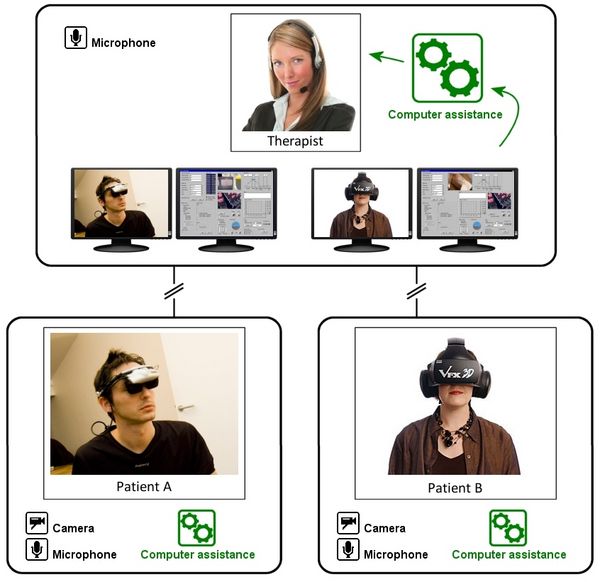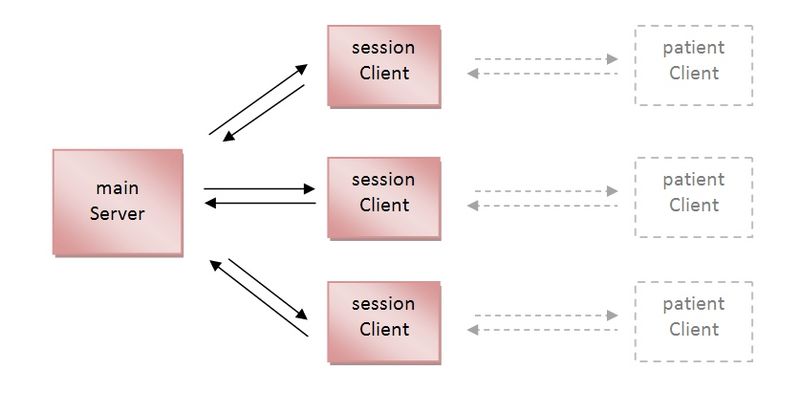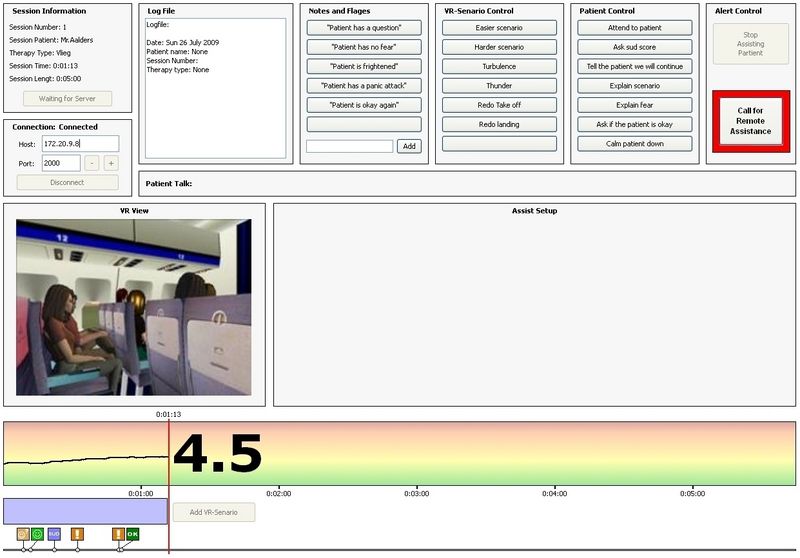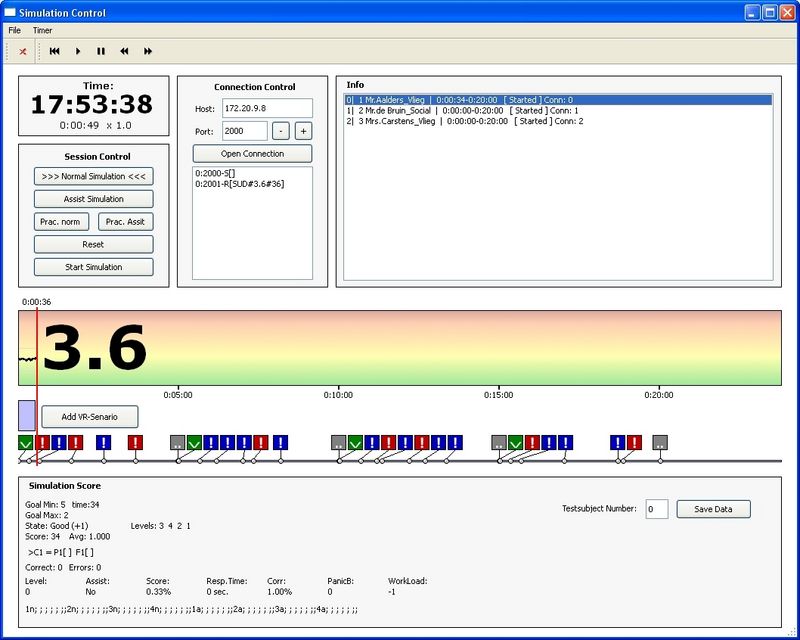Difference between revisions of "Designing a Multiple patient VRET system"
(→The Prototype software) |
(→The Prototype software) |
||
| Line 78: | Line 78: | ||
=== The Prototype software === | === The Prototype software === | ||
| + | |||
'''Overview''' | '''Overview''' | ||
Revision as of 13:30, 9 November 2009
By Christian Paping, Tu-delft, Human-Computer Interaction
Promo video:
<anyweb>http://www.youtube.com/v/sSm9l8Al46A&hl=en&fs=1&</anyweb>
Abstract
The use of Virtual Reality (VR) technology to support the treatment of patients with phobia, such as the fear of flying, is getting considerable research attention. VR treatment may provide substantial improvement in efficient use of therapist resources and accessibility by delivering the treatment over the internet, to multiple patients simultaneously. This motivated initial exploration into the possibilities of a multiple patients Virtual Reality Exposure Treatment (VRET). With such a setup, one therapist can monitor and treat multiple patients simultaneously, each having their own personal VR treatment at their own personal location. The approach taken was (1) a scenario-based investigation with six therapists that had extensive experience in treating patients with VRET, and (2) a controlled lab experiment with 27 (students) participants to examine the effect of an automated assistance function on the therapists’ workload and performance when treating three computer-simulated patients over the internet. The findings of both the interviews and lab experiment are encouraging. They imply that a tele-delivered multi patient VRET system might be possible in the future, thereby providing treatment at remote locations and making efficient use of therapist resources.
Introduction
With current configurations of virtual reality exposure therapy, it is possible for the therapist to treat one patient at the time. This thesis explores a system that allows one therapist to treat two or more patients simultaneously. There are numerous reasons why research on a multiple patient system could be useful. Therapies are expensive and it seems to be possible that one therapist is treating multiple patients in parallel. This way the cost of the treatment can be reduced. It may as well be possible that fewer therapists can assist more patients and thus increasing the efficiency and accessibility of the treatments. In addition, tele-delivered multiple patient VRET could have the benefit of being more accessible to the patients, because it could provide broader options to where en when to the patients could have their therapy.
Literature survey:
Literature survey to a multiple patient VRET system
Scenarios
Scenario 1: The start of the day for a therapist
The first scenario deals with the general setup of a remote VRET session. It describes how therapist Henrietta starts her day at a multiple patient VRET-center. It states how she makes contact with her first patient that day and describes how she interacts with the assistant on location.
Scenario 2: Patient communication
The second scenario describes the remote communicate methods between the therapist and patient. The therapist can hear and see all patients on their own separate monitor and speaker set. The patient can hear the therapist with his or her HMD. The therapist can see what the patients’ view is in their VR environment. Before each session, the patients are connected to a heart rate variability measuring system and a galvanic skin response monitor, which measure the patients’ physiological state. The system automatically asks a SUD score from the patients every two minutes and combines this score with the physiological data into a total anxiety-score. This score is presented continually to the therapist. This scenario also explains that a therapist can fluently switch to another VR-scenario in the same virtual environment.
Scenario 3: The therapist sets up the VR-scenarios and the setup of the assist system
This scenario elaborates on how a therapist can choose the VR-scenarios for the patient. It shows how a therapist can combine different VR scenario phases to a complete scenario, for example the combination of takeoff, flight and landing into a complete fear of flight scenario. Some VR-scenarios phases come in a variety of difficulties adding an option to the therapist to make session more anxiety or less provoking for the patient. This scenario also explains how the therapist can manually setup the automated assist per patient.
Scenario 4: Multiple patients need immediate assistance
The last scenario describes a situation where two patients need immediate attention from the therapists at the same time. It explains that the therapist will assist one patient and the automatic-assist automatically starts to calm the other patient down by switching to a les anxiety provoking VR-scenario.
Videos
The three videos, on average each taking about three minutes, show a therapist assist three patents with multiple patient VRET. The first video shows the start of a session and making contact with the first patient. It also shows how an assistant on location helps the patient with equipping their HMD and sensors.
The second video showed how a therapist can choose the different VR-scenarios for a patient. The last video shows how a therapist can setup an automated assist system and how it is working in general. The main goal of these videos is to use them in interviews with therapists, so they get a better understanding of multiple patient VRET and inspire them to start an discussion.
Scenario 1
<anyweb mywidth="300" myheight="200">http://www.youtube.com/v/4FBN_bBZePU</anyweb>
Scenario 2
<anyweb>http://www.youtube.com/v/cA0TIWbT0Yc</anyweb>
Scenario 3
<anyweb>http://www.youtube.com/v/XzeUAj4ssfE</anyweb>
.
The Prototype software
Overview
Therapist user-interface
Server user-interface
Download the software:
Results
. . .




